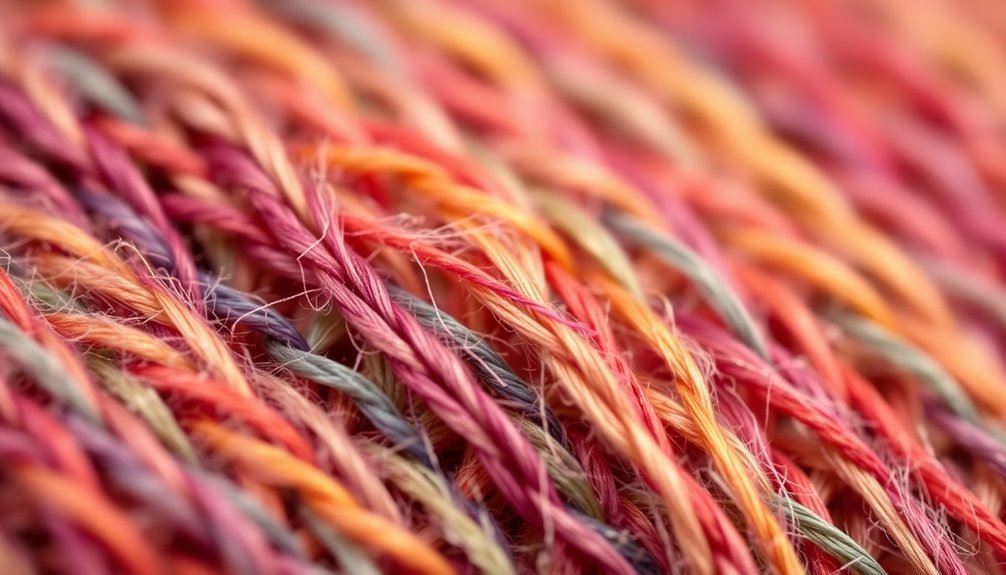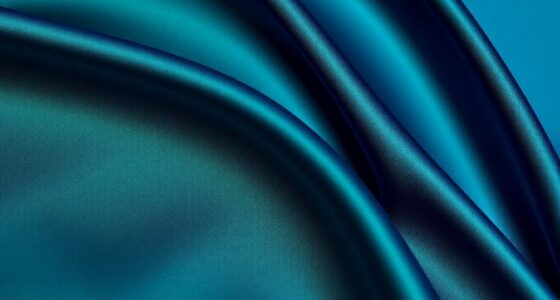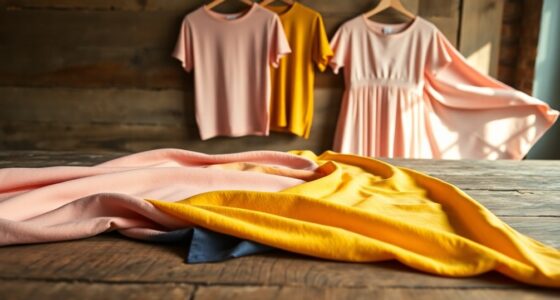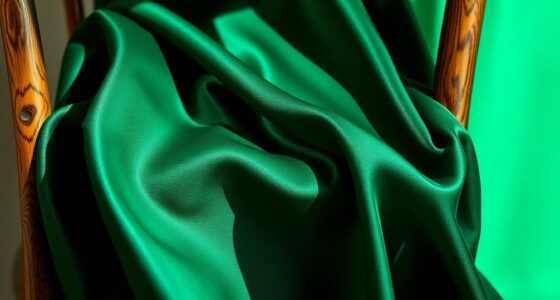Suprem fabric combines high-quality fibers, mainly 100% polyester, along with polyamide, viscose, and lurex, creating a durable and visually appealing material. This blend enhances its strength, elasticity, and softness, ideal for home décor and crafts. The fabric is designed to resist wrinkles and wear, ensuring longevity. Its specialized weaving techniques add to its versatility and aesthetic appeal. Keep exploring to uncover the fascinating applications and performance characteristics of different fibers in fabric compositions.
Key Takeaways
- Suprem fabric is composed of 100% polyester, ensuring durability and wrinkle resistance for various applications in home décor and crafts.
- The fabric incorporates polyamide, viscose, and Lurex, enhancing strength, softness, and aesthetic appeal with a metallic sheen.
- Specialized weaving techniques, including plain, twill, and jacquard, contribute to the fabric's strength, versatility, and visual appeal.
- Blending materials in Suprem fabric maximizes durability, moisture resistance, and thermal regulation, making it suitable for diverse uses.
- Quick shipping is available for Suprem fabric, typically within 4-7 business days, catering to consumer demand and convenience.
Overview of Suprem Fabric
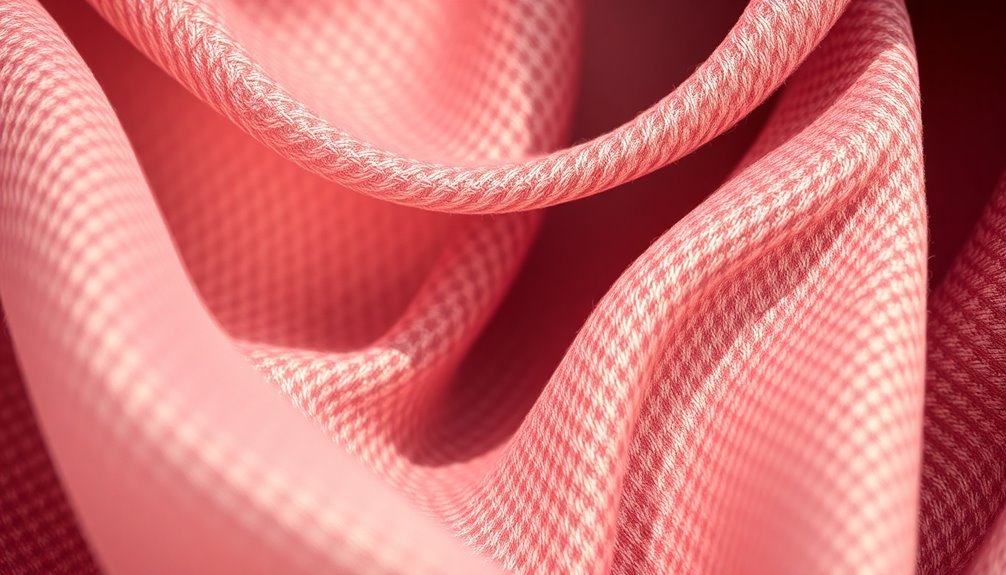
Suprem fabric stands out as a versatile material often used in home décor and craft projects. You might confuse it with Twill Supreme, a faux linen made from polyester, but Suprem offers its unique charm.
Its natural appearance, sometimes enhanced by special weaving techniques, adds a touch of elegance to any creation. This fabric comes in various colors and widths, like the 60-inch option, making it suitable for diverse applications. Additionally, the fabric is made from 100% polyester, ensuring durability and longevity for your projects.
Plus, you'll appreciate the convenience of quick shipping, typically within 4-7 business days, ensuring your projects stay on track.
With its durability and ease of care, Suprem fabric is perfect for everything from table linens to creative crafts.
Key Ingredients in Suprem Fabric
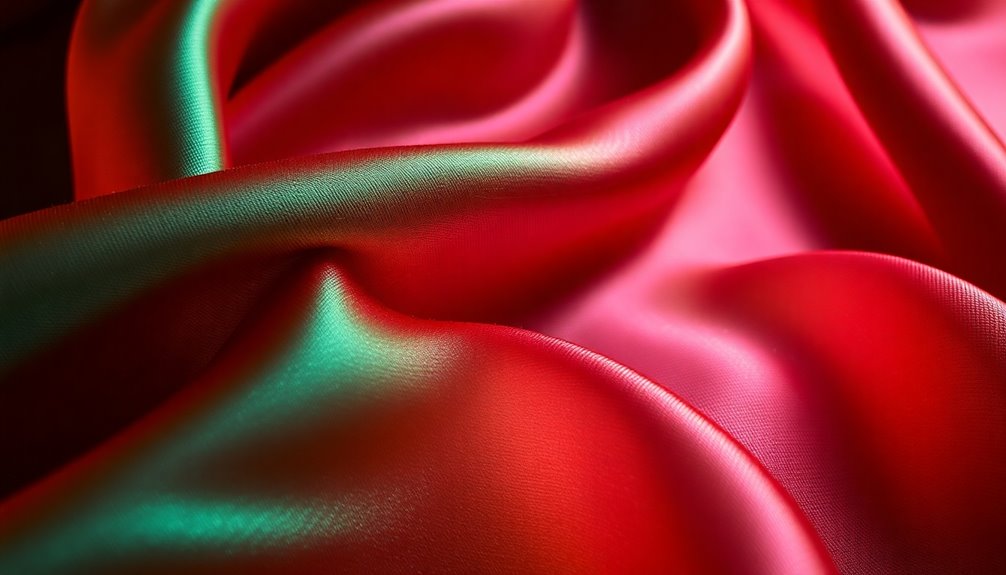
When it comes to Suprem fabric, the key ingredients play a vital role in its overall performance and appeal.
You'll find that polyester is a staple, known for its durability and wrinkle resistance.
Polyamide, or nylon, brings strength and elasticity, often paired with elastane to add stretch.
Viscose, derived from wood pulp, enhances softness and drape, making it comfortable against your skin.
For a touch of flair, Lurex adds a metallic sheen, elevating the fabric's aesthetic.
Blending these materials effectively maximizes durability, moisture resistance, and thermal regulation, while ensuring the fabric retains its shape. This combination of synthetic fibers not only enhances functionality but also provides a stylish edge, making Suprem fabric a popular choice in modern textiles, especially given that fabric composition charts help mitigate production errors and enhance apparel quality.
Natural Fiber Components
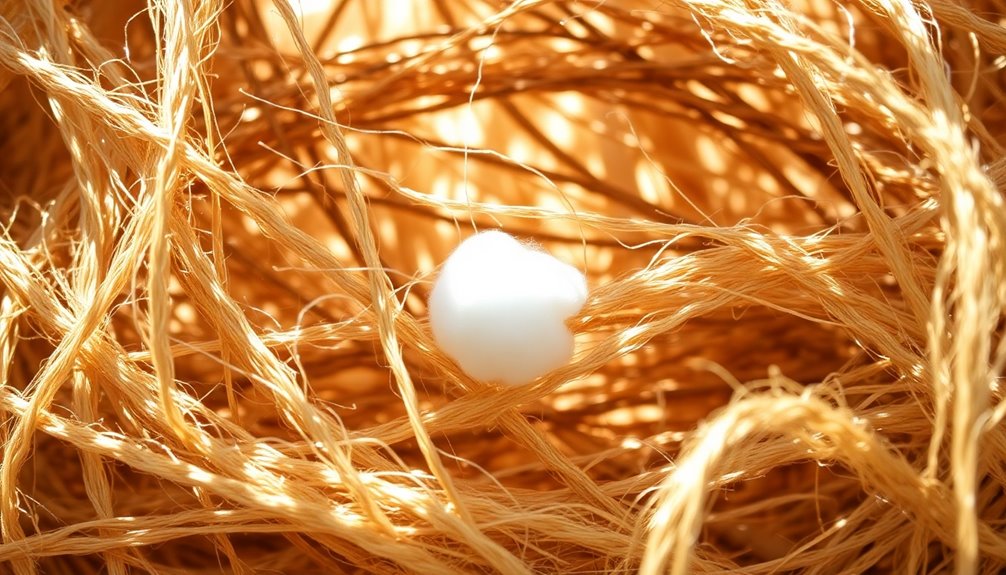
Natural fibers play an essential role in the textile industry, offering a sustainable alternative to synthetic materials. You'll find various types of natural fibers, including plant-based bast fibers like flax and hemp, leaf fibers such as sisal, and seed fibers like cotton. These fibers boast properties like strength, stiffness, and biodegradability, making them environmentally friendly choices. They're breathable, ensuring comfort in textiles, and as renewable resources, they contribute to sustainability. You can use natural fibers in numerous applications, from clothing and composites to building materials and even ropes. Processing methods, like alkaline treatment, enhance their properties, making them even more effective in various uses. Embracing natural fibers supports both durability and eco-friendliness in your textile choices. Additionally, the incorporation of natural fiber composites in various industries demonstrates their versatility and potential for reducing environmental impact.
Role of Synthetic Fibers
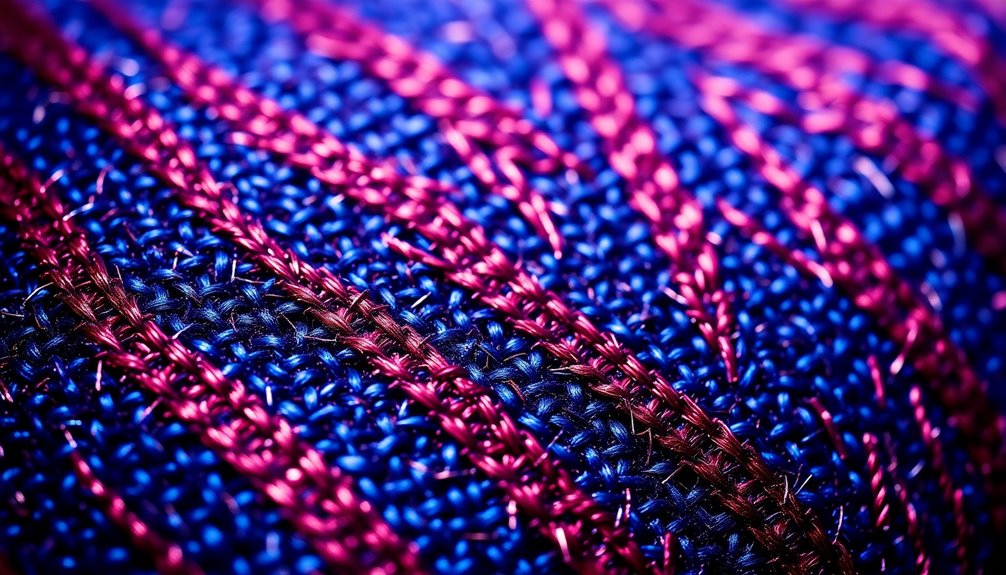
Though often overshadowed by natural fibers, synthetic fibers play an essential role in fabric composition, driving innovation and versatility in the textile industry.
Dominating the market, synthetic fibers account for about 64% of global fiber production, with polyester leading at around 54%. You'll find common types like nylon, acrylic, and polyolefin in various applications, from apparel to industrial uses. Their durability, stretchiness, and water resistance make them popular choices. Approximately half of all fibers are synthetic, highlighting their significant presence in the industry.
However, you should be aware of their environmental impact, particularly concerning microplastic pollution. As the industry pushes for sustainability, initiatives are underway to develop recycled and biobased synthetic fibers, ensuring they continue to meet consumer demands while addressing ecological concerns.
Variations in Composition
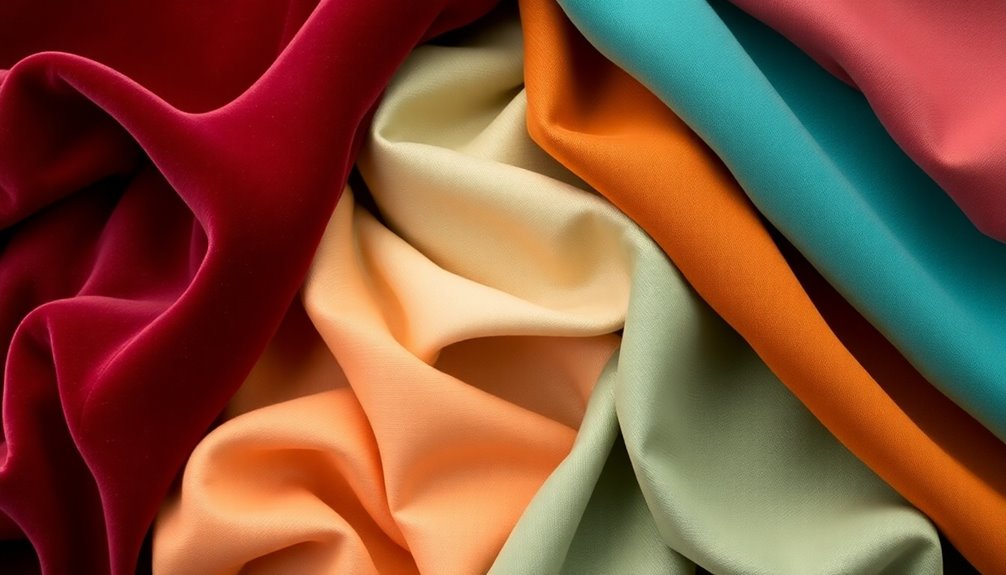
Understanding fabric composition goes beyond just knowing the fiber types; it encompasses a variety of factors that influence the characteristics and uses of different textiles.
For instance, natural fibers like cotton and linen offer breathability, while synthetic fibers such as polyester provide strength and resistance. Blended fibers combine these qualities for balanced performance. One notable example of a high-quality natural fiber is Supima cotton, which is recognized for its softness and durability.
The weave type also plays an essential role; twill weaves are durable, while satin weaves create a smooth finish. Texture further impacts feel—smooth fabrics like silk offer luxury, whereas rough textures like burlap emphasize durability.
Different applications, like apparel or upholstery, require specific fabric properties, influencing your choices based on what you need, whether it's comfort, strength, or style.
Blending Techniques for Enhanced Properties
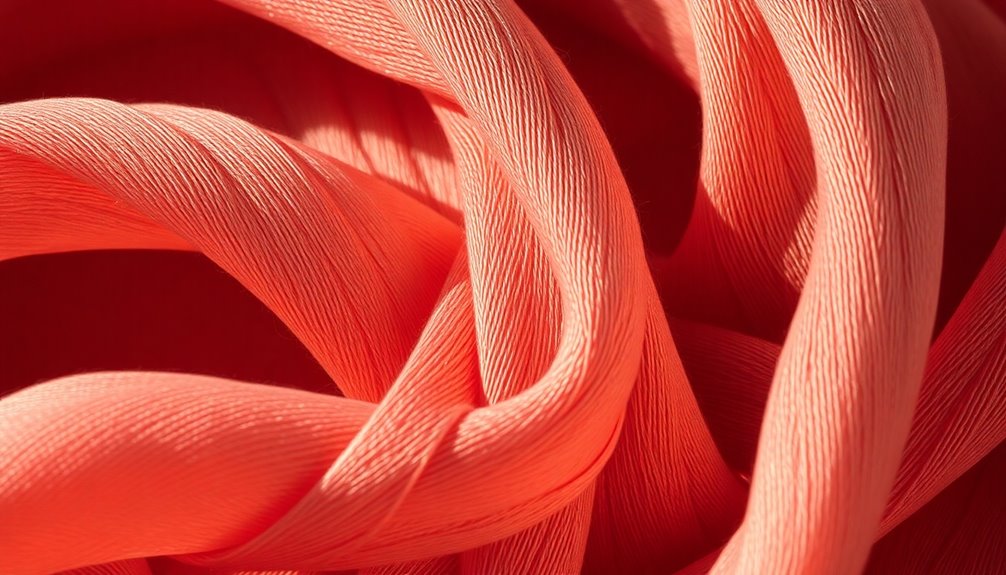
When you explore blending techniques, you'll discover how they enhance fabric properties to meet specific needs.
Carded blending combines fibers at the initial production stages, while intimate blending guarantees uniform distribution of characteristics from the start.
By carefully selecting fibers based on their durability, softness, or breathability, you can achieve specific blend ratios, like 65% polyester and 35% cotton.
The spinning process then transforms these blended fibers into yarns for weaving or knitting.
Benefits include enhanced durability, improved comfort, and unique textures, allowing for versatile applications—from clothing to upholstery.
With options like polycotton or cotton-Lycra, blending techniques give you the ability to tailor fabrics to your desired qualities, creating a perfect balance of functionality and aesthetics. Additionally, the carded blending process ensures that multiple fiber types intermingle during production, resulting in an even mix for better performance.
Impact of Fiber Selection on Fabric Quality
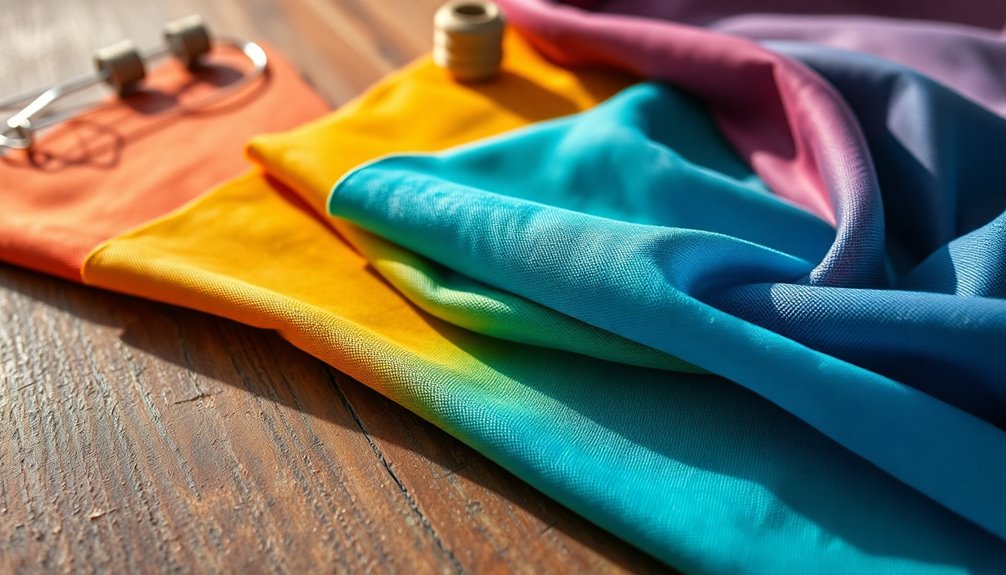
Choosing the right fibers plays a pivotal role in determining the overall quality of a fabric. Your selection impacts durability, comfort, and cost. Natural fibers like wool and cotton may be pricier, but they often offer superior softness and breathability. On the other hand, synthetic fibers like polyester can lower production costs while providing moisture-wicking properties. Additionally, the choice of fiber can determine whether fabrics are sold at premium prices or end up discounted. Durability is another key factor; higher tenacity fibers lead to longer-lasting fabrics, reducing the need for replacements. Consider how fiber length and yarn type influence wear resistance too.
Ultimately, the right choice enhances customer satisfaction and addresses market demands, ensuring your fabric stands out while remaining economically viable.
Comparison of Cotton-Based and Polyester-Based Suprem
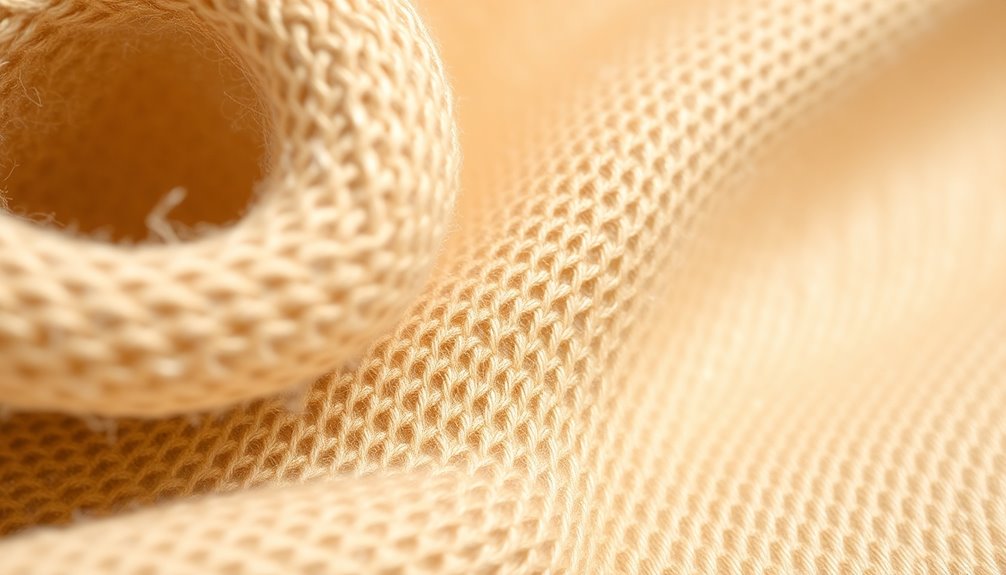
How do cotton-based and polyester-based fabrics stack up against each other?
Cotton, a natural fiber, offers breathability and moisture absorption, making it comfortable for summer wear. However, it requires intensive cultivation and has a higher environmental impact. Additionally, cotton has low dimensional stability, which can affect the longevity of garments made from it.
On the other hand, polyester is synthetic, cheaper to produce, and more durable, resisting wear and tear better than cotton. It excels in wrinkle resistance and color retention but contributes to microplastic pollution. While cotton keeps you warm in colder conditions, polyester's versatility allows it to shine across seasons.
Ultimately, your choice may depend on your priorities regarding comfort, durability, and environmental concerns, with blends offering a balanced option for both worlds.
Specialized Weaving Techniques and Their Benefits
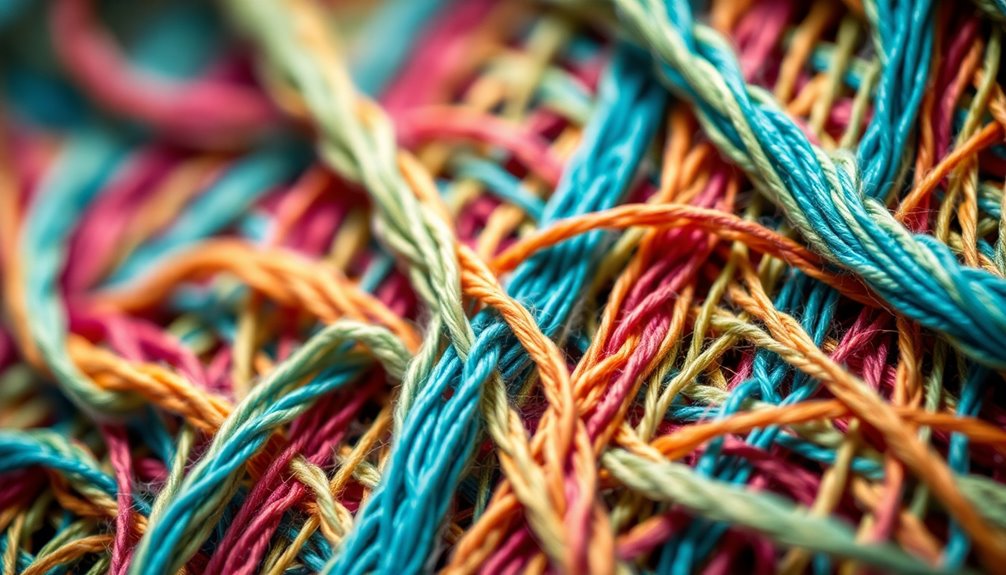
Specialized weaving techniques play an essential role in enhancing fabric performance and aesthetics, making them significant in the textile industry.
For instance, plain weave provides strength and versatility, while twill weave's diagonal patterns add durability and wrinkle resistance. Satin weave creates a luxurious feel with its smooth surface, perfect for formal attire.
Jacquard weave allows you to showcase intricate designs, enhancing visual appeal, and dobby weave introduces unique textures through geometric patterns.
Each technique offers distinct benefits: twill and satin enhance durability, while jacquard and dobby add texture and aesthetics.
Applications and Performance of Different Compositions

As you explore the diverse applications of fabric compositions, you'll find that each type brings unique advantages tailored to specific needs.
For workwear, polyester-cotton blends offer durability and comfort, while an 80/20 mix is perfect for casual clothing, balancing longevity and ease. This polyester-cotton blend is designed to withstand regular wear and tear, making it ideal for demanding environments.
In home decor, fabrics like gabardine and crepe are favored for their aesthetic appeal and strength.
Streetwear brands like Supreme utilize high-quality materials to guarantee premium products.
Understanding fabric compositions also plays a crucial role in apparel manufacturing, helping reduce rework and waste.
Synthetic options like microfiber and polyester crepe provide strength and fluidity, whereas natural fibers like cotton and silk deliver breathability and luxury.
Blended fabrics, like poly viscose, combine the best of both worlds for peak performance.
Frequently Asked Questions
How Does Suprem Fabric Compare to Traditional Knitted Fabrics?
When you compare Suprem fabric to traditional knitted fabrics, you'll notice key differences.
Traditional knits are known for their high stretchability, breathability, and comfort, making them ideal for activewear. They also have varying yarn weights, affecting thickness and drape.
Suprem fabric's specific properties are less defined, but it may not offer the same flexibility.
Ultimately, your choice depends on the comfort and performance you need for your garments.
Can Suprem Fabric Be Recycled or Is It Biodegradable?
You'll find that recycling Suprem fabric can be challenging due to its varied composition, which may include synthetic materials like polyester.
These materials aren't biodegradable, contributing to environmental issues if not properly recycled.
Cotton-based blends might offer some recyclability, but the process often reduces fiber quality.
While some fabrics can be recycled, understanding their composition is key to determining their environmental impact and potential for biodegradability.
What Certifications Should I Look for When Buying Suprem Fabric?
When you're diving into the sea of fabric choices, look for certifications that shine like guiding stars.
Seek out EN12934 for cleanliness, GOTS for organic textile assurance, and SEDEX for ethical practices.
IDFL and ISO standards can also be your allies, ensuring quality and sustainability.
These certifications not only promise a product's integrity but also reflect your commitment to a responsible choice in the fabric world.
Your selections can make waves!
Are There Any Specific Care Instructions for Suprem Fabric?
Yes, there are specific care instructions for Suprem fabric.
Always wash it in cold water with a mild detergent to prevent fading and damage. Avoid bleach and harsh detergents, as they can ruin the fabric.
For items like t-shirts, turn them inside out before washing. Air dry everything to avoid shrinkage.
Remember to treat stains promptly and handle the fabric gently to maintain its quality and texture.
What Are the Environmental Impacts of Producing Suprem Fabric?
Producing synthetic fabrics like Suprem can be a double-edged sword.
You're looking at significant resource consumption, as it often relies on petroleum, contributing to depletion.
Water pollution is another concern, with toxic runoff harming aquatic life.
Plus, the production process emits greenhouse gases and creates microplastics that litter our oceans.
It's clear that the environmental impacts are serious, pushing you to contemplate more sustainable fabric options for your wardrobe.
Conclusion
In summary, understanding suprem fabric's composition is like peeling an onion—each layer reveals unique qualities that enhance its versatility and performance. By blending natural and synthetic fibers, you unfasten the fabric's potential for durability and comfort. Whether you prefer the breathability of cotton or the resilience of polyester, the right choice can elevate your textile experience. As you explore its various applications, remember that the fabric's true magic lies in its carefully crafted blend.
